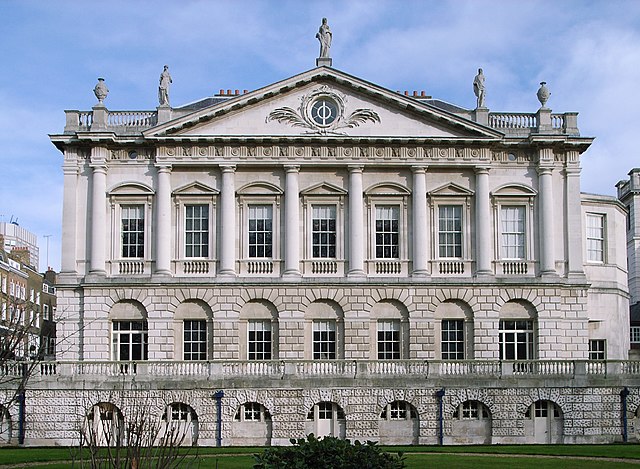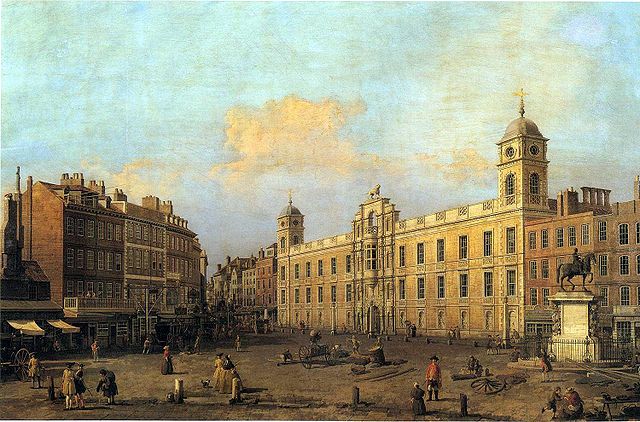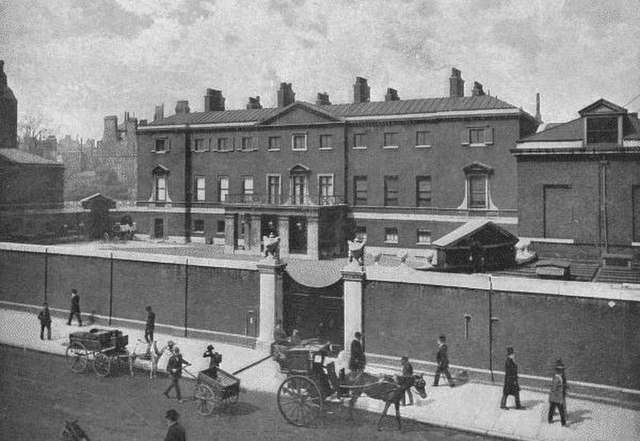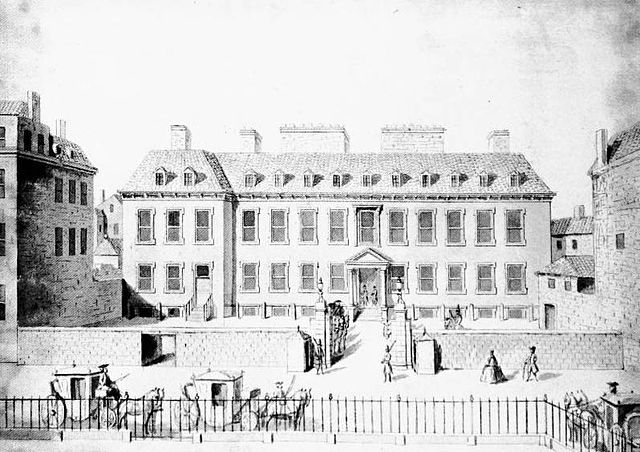An hôtel particulier is a grand townhouse, comparable to the British townhouse or mansion. Whereas an ordinary maison (house) was built as part of a row, sharing party walls with the houses on either side and directly fronting on a street, an hôtel particulier was often free-standing and, by the 18th century, would always be located entre cour et jardin – between the cour d'honneur and the garden behind. There are hôtels particuliers in many large cities in France.
The Hôtel de Soubise in the 3rd arrondissement of Paris
Hôtel de Guénégaud in Paris
Hôtel Prouvost in Roubaix
Hôtel de Caumont in Aix-en-Provence.
Townhouse (Great Britain)
In British usage, the term townhouse originally referred to the opulent town or city residence of a member of the nobility or gentry, as opposed to their country seat, generally known as a country house or, colloquially, for the larger ones, stately home. The grandest of the London townhouses were stand-alone buildings, but many were terraced buildings.
Spencer House in St James's, London, one of the last surviving true townhouses still owned by the noble family that built it, the Spencers, although it is now generally leased out commercially. The corresponding country house is Althorp in Northamptonshire.
The Strand front of Northumberland House in 1752 by Canaletto, the townhouse of the Dukes of Northumberland. Note the "Percy Lion" atop the central facade.
Devonshire House, Piccadilly, in 1896
Leicester House on Leicester Fields, 1748








